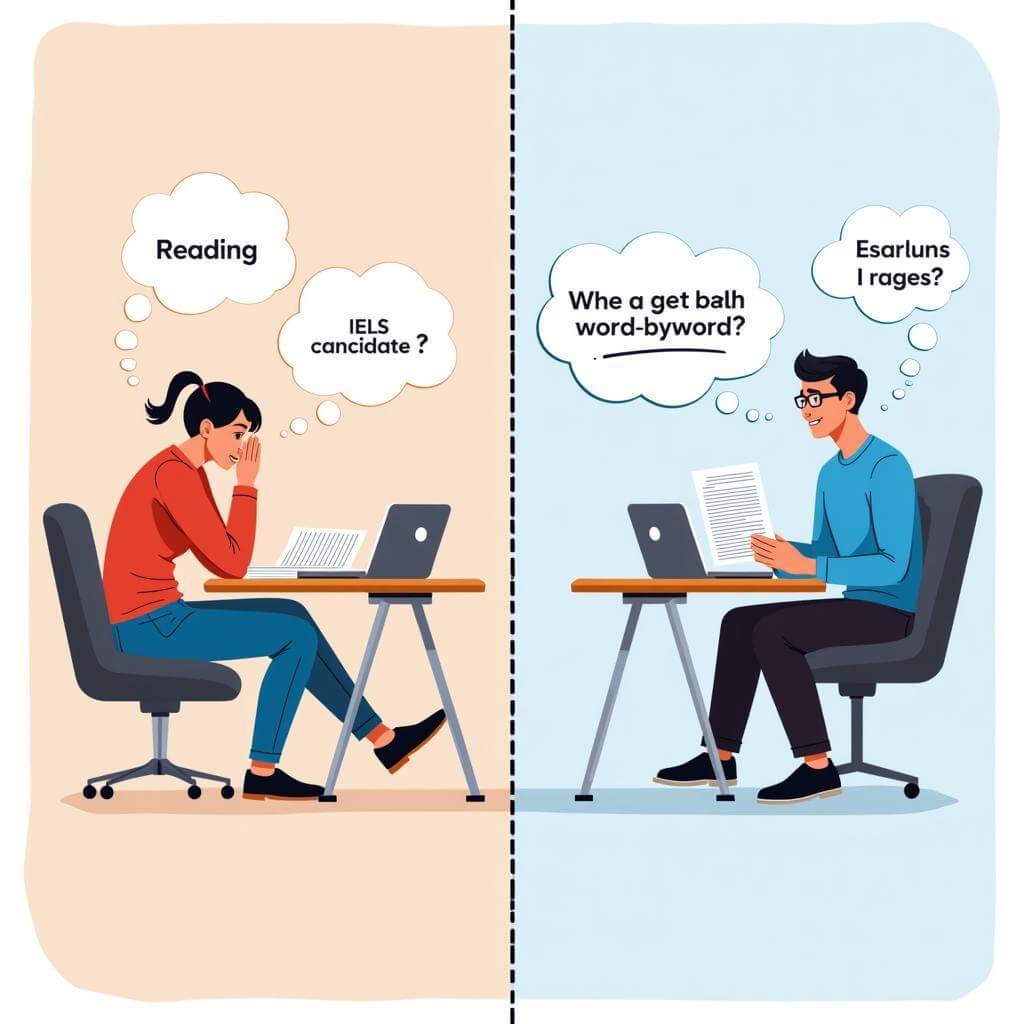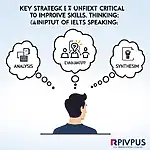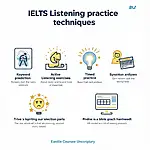Reading fluency is a critical skill for IELTS test-takers aiming to improve their performance in the reading section. By enhancing your ability to read quickly and comprehend effectively, you can significantly boost your chances of achieving a higher band score. Let’s explore some proven strategies for improving reading fluency for faster comprehension in the context of IELTS preparation.
Understanding the Importance of Reading Fluency in IELTS
Reading fluency goes beyond mere speed; it encompasses the ability to read accurately, smoothly, and with proper expression. In the IELTS context, fluency translates to efficient comprehension, allowing you to tackle more questions within the given time frame.
The Connection Between Fluency and Comprehension
When you read fluently, your mind can focus more on understanding the content rather than decoding individual words. This leads to improved comprehension, which is crucial for answering IELTS questions accurately.
 The connection between reading fluency and comprehension in IELTS
The connection between reading fluency and comprehension in IELTS
Strategies to Enhance Reading Fluency
1. Expand Your Vocabulary
A robust vocabulary is the foundation of reading fluency. The more words you recognize instantly, the smoother your reading will be.
- Create a personal IELTS vocabulary list
- Use flashcards for daily practice
- Read extensively in English to encounter words in context
2. Practice Skimming and Scanning
These techniques are essential for quickly identifying key information in IELTS passages.
- Skim for main ideas by reading the first and last sentences of paragraphs
- Scan for specific details using keywords from the questions
Dr. Emily Chen, an IELTS expert with over 15 years of experience, emphasizes, “Mastering skimming and scanning can save precious minutes during the test, allowing more time for complex questions.”
3. Utilize the ‘Chunking’ Method
Instead of reading word-by-word, train your eyes to grasp groups of words at once.
- Start with small phrases and gradually increase to larger chunks
- Practice with increasingly complex texts to challenge yourself
4. Engage in Timed Reading Exercises
Simulate test conditions to improve your reading speed under pressure.
- Set a timer for each IELTS practice passage
- Gradually reduce the time allowed as your speed improves
 IELTS candidate practicing timed reading exercises
IELTS candidate practicing timed reading exercises
5. Improve Your Focus and Concentration
Distractions can significantly hinder reading fluency. Develop techniques to maintain focus during long reading sessions.
- Practice mindfulness or meditation to enhance concentration
- Create a distraction-free study environment
- Take short breaks between passages to reset your focus
Advanced Techniques for Rapid Comprehension
1. Develop Predictive Reading Skills
Anticipate the content based on context clues, headings, and your background knowledge.
- Read the first sentence of each paragraph to predict the main ideas
- Use your knowledge of text structures to anticipate information placement
2. Enhance Your Critical Reading Abilities
Move beyond surface-level understanding to analyze and evaluate the text quickly.
- Ask yourself questions about the author’s purpose and main arguments
- Practice identifying tone and bias in various texts
3. Utilize Speed drills for Rapid Improvement
Incorporate specific exercises designed to boost your reading speed and comprehension simultaneously.
- Set increasingly challenging word-per-minute goals
- Use finger or pencil tracking to guide your eyes more quickly across the page
IELTS trainer Sarah Thompson notes, “Regular speed drills can lead to remarkable improvements in reading fluency, often increasing comprehension speed by 30% or more.”
4. Leverage Technology for Practice
Use digital tools and apps specifically designed for improving reading speed and comprehension.
- Try speed reading apps with adjustable text scrolling
- Use online IELTS practice tests with timed sections
Overcoming Common Challenges
Dealing with Complex Vocabulary
When encountering unfamiliar words:
- Use context clues to infer meaning
- Don’t dwell on individual words; focus on overall comprehension
Managing Test Anxiety
Anxiety can significantly impact reading fluency. To combat this:
- Practice relaxation techniques before and during reading exercises
- Improve speed with practice tests to build confidence
Adapting to Different Text Types
IELTS presents various text types. To improve adaptability:
- Practice with a wide range of academic and general texts
- Analyze the structure of different text types to quickly identify key information
 IELTS candidate adapting to different text types
IELTS candidate adapting to different text types
Integrating Fluency Practice into Your IELTS Preparation
To effectively improve your reading fluency for the IELTS test:
- Allocate dedicated time for fluency-focused exercises
- Combine fluency practice with comprehension questions to mirror test conditions
- Track your progress using timed readings and comprehension scores
- Gradually increase text complexity as your skills improve
Remember, consistent practice is key. As Dr. Chen advises, “Aim for at least 30 minutes of focused reading practice daily to see significant improvements in your IELTS reading performance.”
Conclusion
Improving reading fluency for faster comprehension is a game-changer for IELTS success. By implementing these strategies and dedicating time to regular practice, you can dramatically enhance your ability to navigate the reading section with confidence and efficiency. Remember, fluency is a skill that develops over time, so be patient with yourself and celebrate your progress along the way. With perseverance and the right techniques, you’ll be well on your way to achieving your desired IELTS band score.
FAQ
How long does it typically take to see improvements in reading fluency?
With consistent practice, most students notice improvements within 4-6 weeks. However, significant changes can take 2-3 months of dedicated effort.
Can I improve my reading fluency without sacrificing comprehension?
Absolutely! The goal is to improve both simultaneously. As your fluency increases, your comprehension should naturally follow, as you’ll have more mental capacity to focus on understanding rather than decoding.
Are there any specific reading materials recommended for IELTS fluency practice?
While any English text can be beneficial, focus on academic articles, scientific journals, and reputable news sources that mirror the complexity and style of IELTS passages.
How can I measure my reading speed accurately?
Use online tools or apps that calculate words per minute (WPM). Aim to read at least 250-300 WPM with good comprehension for IELTS-level texts.
Is it helpful to read aloud when practicing for IELTS reading fluency?
While reading aloud can improve pronunciation and rhythm, silent reading is more beneficial for developing the rapid comprehension skills needed for IELTS. Focus on Reaction drills for better results.
How can I maintain my improved reading fluency over time?
Consistent practice is key. Incorporate daily reading into your routine, even after achieving your desired fluency level. This will help maintain and further improve your skills.


